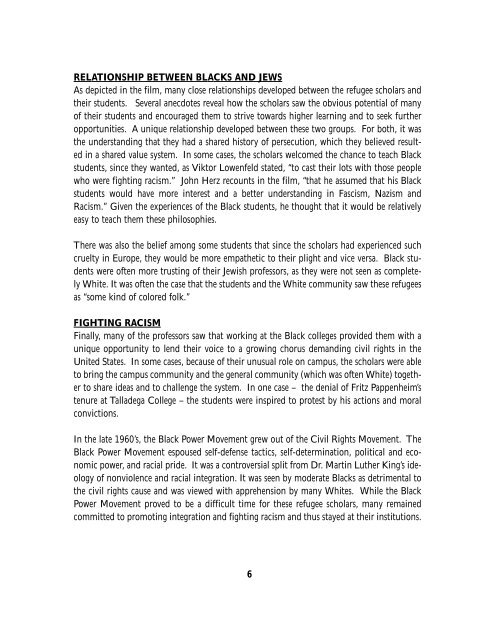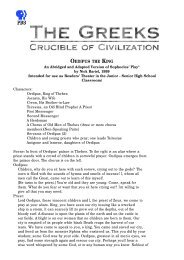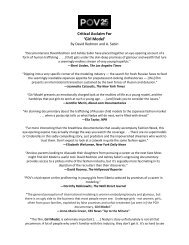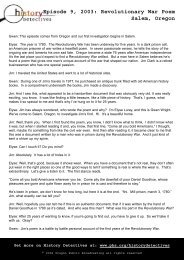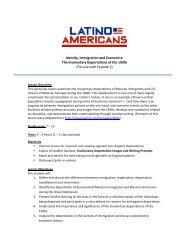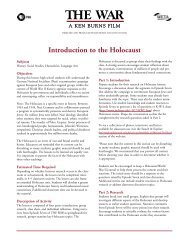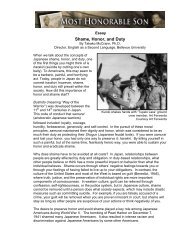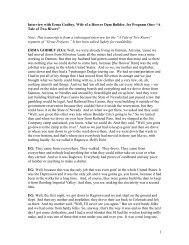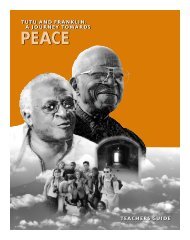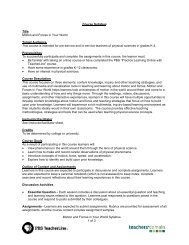from swastika to jim crow discussion guide - PBS
from swastika to jim crow discussion guide - PBS
from swastika to jim crow discussion guide - PBS
You also want an ePaper? Increase the reach of your titles
YUMPU automatically turns print PDFs into web optimized ePapers that Google loves.
RELATIONSHIP BETWEEN BLACKS AND JEWS<br />
As depicted in the film, many close relationships developed between the refugee scholars and<br />
their students. Several anecdotes reveal how the scholars saw the obvious potential of many<br />
of their students and encouraged them <strong>to</strong> strive <strong>to</strong>wards higher learning and <strong>to</strong> seek further<br />
opportunities. A unique relationship developed between these two groups. For both, it was<br />
the understanding that they had a shared his<strong>to</strong>ry of persecution, which they believed resulted<br />
in a shared value system. In some cases, the scholars welcomed the chance <strong>to</strong> teach Black<br />
students, since they wanted, as Vik<strong>to</strong>r Lowenfeld stated, “<strong>to</strong> cast their lots with those people<br />
who were fighting racism.” John Herz recounts in the film, “that he assumed that his Black<br />
students would have more interest and a better understanding in Fascism, Nazism and<br />
Racism.” Given the experiences of the Black students, he thought that it would be relatively<br />
easy <strong>to</strong> teach them these philosophies.<br />
There was also the belief among some students that since the scholars had experienced such<br />
cruelty in Europe, they would be more empathetic <strong>to</strong> their plight and vice versa. Black students<br />
were often more trusting of their Jewish professors, as they were not seen as completely<br />
White. It was often the case that the students and the White community saw these refugees<br />
as “some kind of colored folk.”<br />
FIGHTING RACISM<br />
Finally, many of the professors saw that working at the Black colleges provided them with a<br />
unique opportunity <strong>to</strong> lend their voice <strong>to</strong> a growing chorus demanding civil rights in the<br />
United States. In some cases, because of their unusual role on campus, the scholars were able<br />
<strong>to</strong> bring the campus community and the general community (which was often White) <strong>to</strong>gether<br />
<strong>to</strong> share ideas and <strong>to</strong> challenge the system. In one case – the denial of Fritz Pappenheim’s<br />
tenure at Talladega College – the students were inspired <strong>to</strong> protest by his actions and moral<br />
convictions.<br />
In the late 1960’s, the Black Power Movement grew out of the Civil Rights Movement. The<br />
Black Power Movement espoused self-defense tactics, self-determination, political and economic<br />
power, and racial pride. It was a controversial split <strong>from</strong> Dr. Martin Luther King’s ideology<br />
of nonviolence and racial integration. It was seen by moderate Blacks as detrimental <strong>to</strong><br />
the civil rights cause and was viewed with apprehension by many Whites. While the Black<br />
Power Movement proved <strong>to</strong> be a difficult time for these refugee scholars, many remained<br />
committed <strong>to</strong> promoting integration and fighting racism and thus stayed at their institutions.<br />
6


